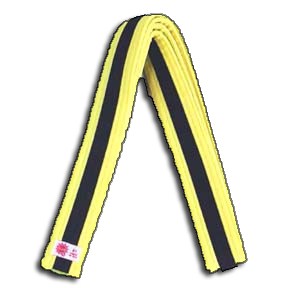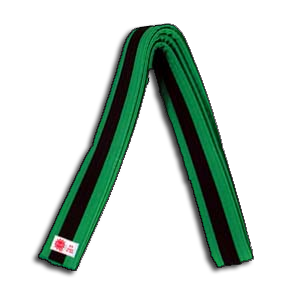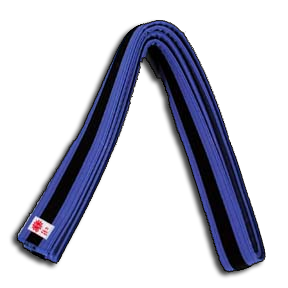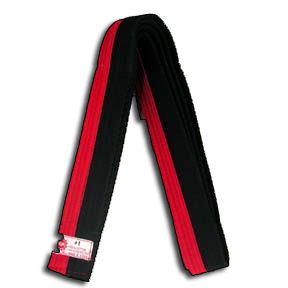
0. Ki-Bon (Basic Form)
Kibon Set is a simple, basic form (poomsae) often taught to introductory students especially in Kukkiwon/WTF-style taekwondo. Unlike the standard Kukkiwon/WTF-forms, the Kibon forms are not standardized: different schools use different forms. After Kibon Set, most Kukkiwon/WTF-style schools would then teach the form Taegeuk Il Jang, the first of the Kukkiwon "standardized" forms.
This is the Required Poomsae for Yellow Belt


1. Taegeuk II Jang
Taegeuk Il Jang is the first of eight "taegeuk" forms (i.e., poomsae) used by the Kukkiwon and World Taekwondo (WT). The word "Il" is the number 1 in the sino-Korean numbering system (as opposed to the traditional Korean numbering system, where hana is 1); "jang" translates as chapter, so literally the name of this form is "chapter 1 of the taegeuk."
This is the Required Poomsae for High Yellow Belt


2. Taegeuk Yi Jang
Students shift from Walking Stance to Front Stance more frequently in this form than in Taegeuk Il Jang; the Front Kick is also introduced -- the idea is that these will teach the student balance and proper stances, strengthening the muscles of the legs.
This is the Required Poomsae for Green Belt

3. Taegeuk Sam Jang
The idea is that this form should crackle like a fire: rapidly fluid throughout, with bursts of power. For example, the punches at steps 8 and 10 "burst" forward from their prior stances, like the crackle and pop of a fire. This form introduces knifehand techniques as well as combinations (i.e., multiple movements performed on the same beat).
This is the Required Poomsae for High Green Belt

4. Taegeuk Sa Jang
Previous forms allowed the student to focus on just movements of the upper body or lower body, but in Taegeuk Sa Jang the student must learn to focus on the movements of the entire body all at once; for example, the right Side Kick at step 8a must flow smoothly into proper chambering for the Double Knifehand Block at step 8b.
This is the Required Poomsae for Blue Belt

5. Taegeuk Oh Jang
This form should be performed with flexibility and unyielding power. The power is seen, for example, in the downward hammerfists and the many elbow strikes. The flexibility is seen for example in steps 15-16, where the torso, legs, and arms are all required to stretch and twist. This form emphasizes backfist strikes and introduces elbow strikes.
This is the Required Poomsae for High Blue Belt


6. Taegeuk Yook Jang
This form requires very fluid movements, such as the immediate but complex transition from step 12a to step 12b: the left Roundhouse Kick to the right Low Block. Like water, the attacks are persistent, such as with steps 8-9: punch, kick, punch - uninterrupted by blocks. The final backwards steps 16-18 mimic the way water flows formlessly back to its container.
This is the Required Poomsae for Brown Belt

7. Taegeuk Chil Jang
This form introduces the Cat Stance (also called Tiger Stance), the Knee Strike, and the Crescent Kick as well as a number of new blocks. The blocks in this form are intended to reflect immovability; i.e., rather than reflecting the blows, they take the blows head-on. This can be seen for example at step 16, the Low Cross Block. Unlike previous Taegeuk forms, this form introduces an exceptionally large number of new techniques.
This is the Required Poomsae for Red Belt (Test on #1,3,5,7)

8. Taegeuk Pal Jang
Just as the earth is the foundation for everything else, this form serves as the foundation for learning the upcoming Black Belt forms. After Taegeuk Pal Jang, students usually test for Black Belt and then begin to study the form Koryo.
This is the Required Poomsae for Dragon Belt


Black Belts
Kukkiwon Certification. The Kukkiwon is the recognized governing organization for Olympic or WTF style Taekwondo. Ownership of a Kukkiwon Dan certificate demonstrates international acceptance of Taekwondo skills. This is the highest Dan level certification available in the world today.
Join U.S. TKD
This site is not the offical site of U.S. TKD. This is simply a tool to help others learn and remember their Poomsaes. I highly recommend you contact Master Lee at U.S. TKD and join his Dojang (Gym)! The offical contact information for U.S. TKD is below:









